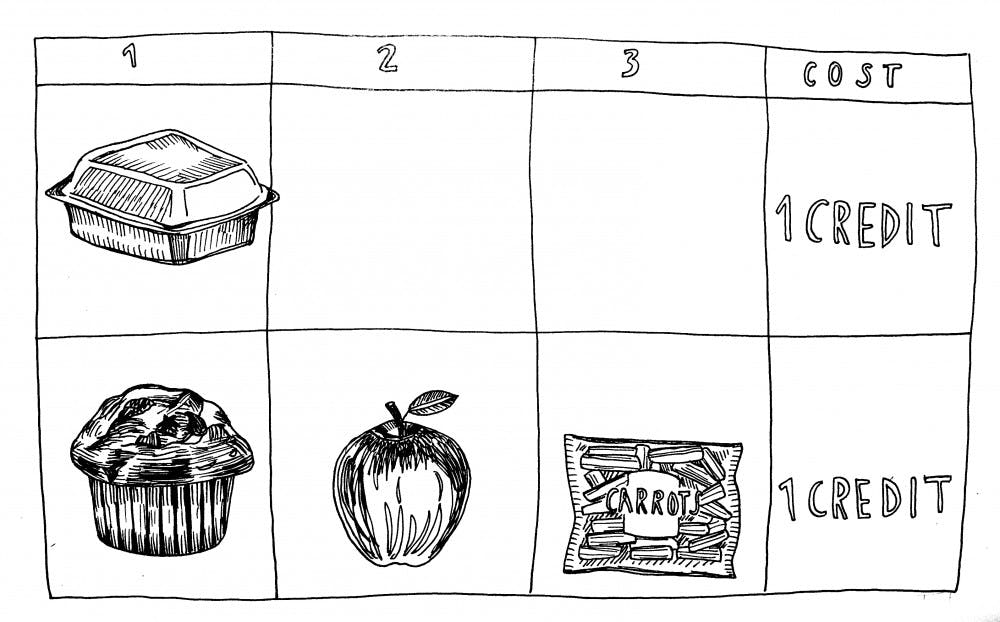The beginning of the semester always kicks off with similar conversations: boasting about internships, complaining about your living situation and groaning about the ever-increasing price of dining hall food.
This year, students handed over $3.00 for Blue Room iced coffee and sacrificed their points upon realizing that a “spicy with” and fries at Josiah’s now cost ten cents more than one meal credit, which increased this year to $7.90 from $7.60.
Each year, Dining Services reviews food prices and the meal credit value to find the most cost-effective way to produce high-quality foods, said Director of Dining Services Peter Rossi. As the costs of ingredients rise, they must adjust accordingly.
[infogram id="83d644e2-7ef0-49e4-985b-8f61f20a8ff7" prefix="3Vr" format="interactive" title="Prices of food items in campus eateries"]
“You might see that the dairy market is going up, and that’s something we have to balance, where the produce market may not be, and it’s staying flat,” he added.
But for those who don’t keep up with dairy markets, the change may be sudden. Students like Julia Green ’19 and Morgan Hagenbuch ’19 noted an increase in the prices of items at the Blue Room, Jo’s and Andrews, à la carte dining halls. In some cases, the food price increases match the increased value of the meal credit. For example, combos that used to cost $7.60 now cost $7.90, like two slices of pizza with chips and a drink, said Nishan Khanal ’20, a BUDS employee at Andrews.
In other cases, students are not sure that the increased value of a meal credit matches the increased price of food.
“I usually get a spicy with and fries at (Jo’s),” Hagenbuch said. “It used to be exactly a meal credit, so you could get that meal and get a drink if you wanted to go over, but now you have to go over (the meal credit) no matter what.”
Rossi wrote in an email to The Herald that the price increased because Jo’s started using a new “premium” type of french fry.
“Our culinary group wanted to add a little change,” Rossi said. “So, as opposed to a straight-cut fry or just a regular fry, we decided to add some additions. And the cost of the different types of fry, whether it be a waffle fry, a thick cut fry — those prices will fluctuate.”
Alison Cleary ’19, a student supervisor in the Blue Room, noted that the value of a meal credit has gone up 30 cents each year she has been at Brown, starting at $7.30 her freshman year. For the most part, she sees the increased prices matching the increased value of the meal credit.
Campus eateries like Andrews attempted to sell some classic offerings — such as pasta — by weight, rather than a single price, Khanal said. But the move was met with outcry, and Andrews returned to the meal credit after the first attempt, he added.
Cleary said pricing food by weight is a good idea, as it gives students more control over their meals.
But Green said the method makes it difficult for students to get an amount of food that doesn’t go over a meal credit.
“The food that’s at the Blue Room and Andrews, all those specialty things that are per pound, … they always end up being more than the meal swipe because it’s just human error,” Green said. “You say you want chicken, and the (worker) will put two pounds of chicken on, and maybe I only wanted a little bit, but suddenly I’m spending two or three meal swipes on it.”
After three years in the Blue Room, Cleary said she hears plenty of complaints from behind the counter. Often, students complain that while the value of a credit has increased, meal plans still allot the same amount of points, she said.





